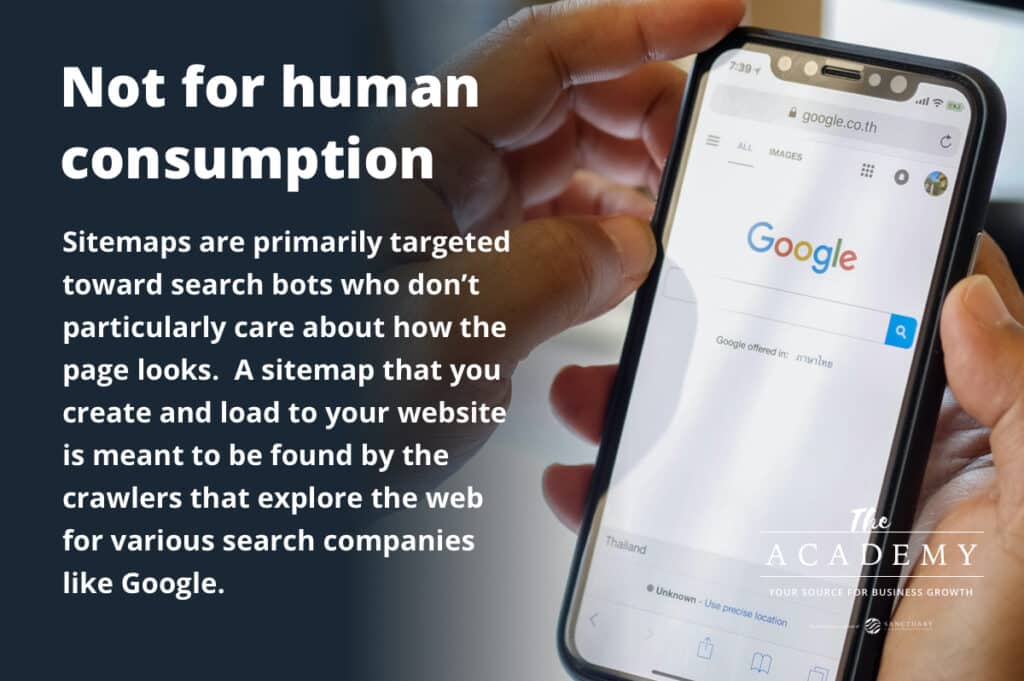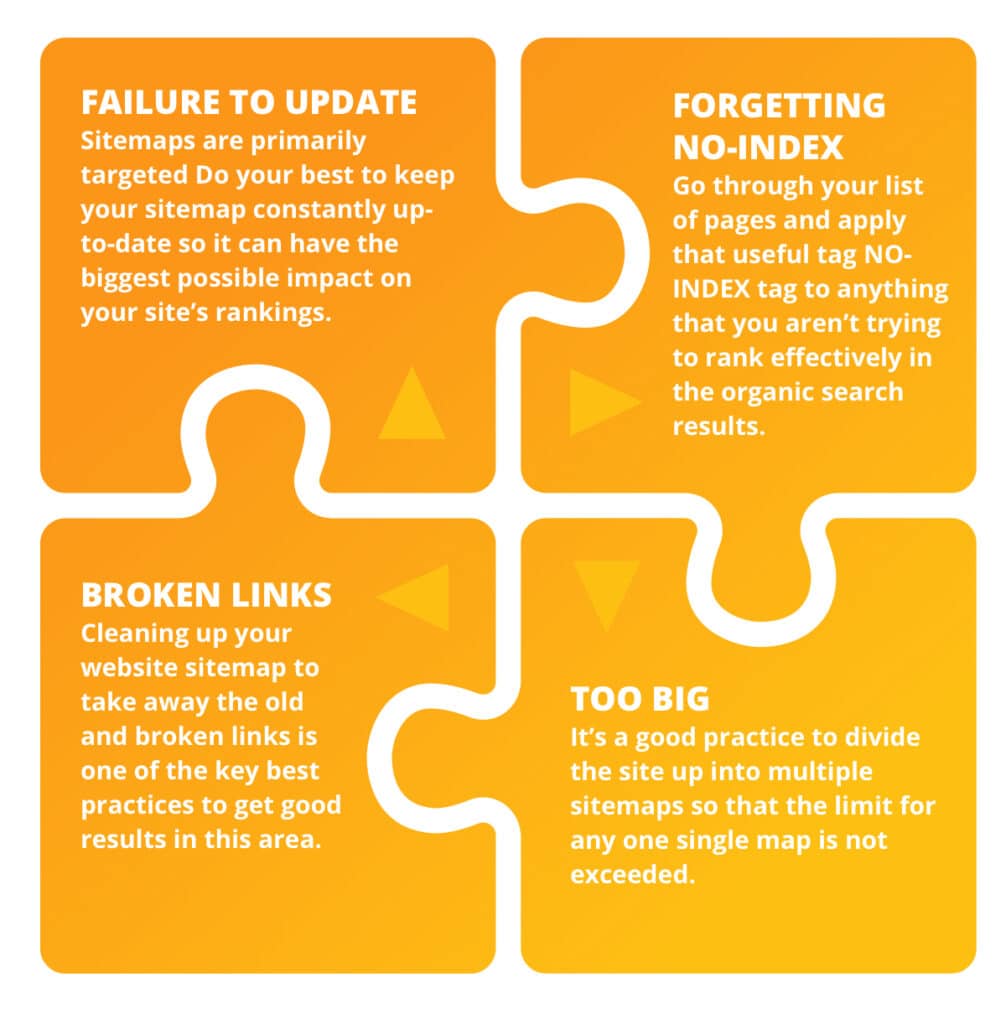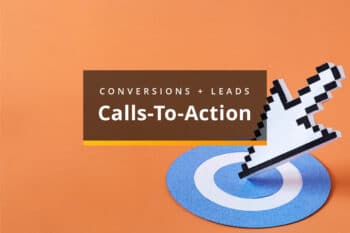
In the never-ending quest for greater search traffic, you might find yourself looking for every little advantage you can find over the competition. Those in the SEO game are always seeking a new keyword with great search volume, or a link opportunity from an authoritative site.
While pursuing those kinds of channels for organic traffic growth is well worth your time, you also need to make sure you aren’t making any obvious mistakes on the site that you already have in place. Sometimes, creeping up the search results isn’t as much about the big moves you make as it is about the small mistakes you avoid.
That’s the background that brings us to the discussion of sitemaps. This is a fundamental piece of a well-built site, yet it’s something that most people don’t give a lot of time or attention. Let’s go over why sitemaps are so important to the performance of your pages and how you can make sure that yours is getting the job done.
What is a Sitemap?
The term sitemap makes this file sound graphical in nature, but that’s not the case at all. Rather, this is just a list of all of the pages on your site. Most sitemaps are very plain, as they aren’t meant for human consumption. This is not a navigational tool that will typically be used by the visitors of your site to help them get around and find what they are looking for. Rather, sitemaps are primarily targeted toward search bots who don’t particularly care about how the page looks.
A sitemap that you create and load to your website is meant to be found by the crawlers that explore the web for various search companies like Google. A web crawler is tasked with finding various websites and then finding and indexing all of the pages on that site. While it can do this work by following internal links on the site from one page to the next, it is far more efficient when a sitemap is available. Using the sitemap file, the search crawler can go through the sitemap and immediately understand what is on the site and how it is organized.

Don’t waste time trying to dress up your sitemap or make it appealing to potential visitors in any way. Most likely, almost no one will find this part of your site, other than the search bots that you are targeting. The only focus here should be to make sure all of the information relevant to the layout of your site is available within the sitemap, and that it is formatted in a way that search bots can understand and properly index.
Is a Sitemap Necessary?
Before you go off and start to build a sitemap to attach to your website, we should stop and talk about whether or not it is absolutely necessary to have one in place. And, the answer to that question is no. You can certainly have a site up on the web without a sitemap, and that site might prove to be quite successful without this feature.
That answer might be surprising, but it’s the truth. You don’t need a sitemap – but we would strongly recommend that you have one anyway. We’ll get more into the benefits of a sitemap in the next section of this article, but from a big-picture perspective, you can think of your sitemap as indexing insurance to make sure none of your key pages are missed.
It’s common for a site to have at least some pages within its structure that don’t have any internal links pointing to that page. When that happens, it can be difficult – or even impossible – for Google to find and index those pages, so they’ll never appear in the search results. With a sitemap, you can make sure the search engines know about all of your pages, even when they don’t have any incoming internal links.
There is also the matter of convenience to mention on this topic. It just doesn’t take very long, or very much expertise, to create a sitemap. Given that it has the potential to benefit your site, spending just a short amount of time on this task is almost certainly going to be worth the effort. You might be able to make an argument against bothering with a sitemap if it was a long, expensive, or difficult process to manage, but that’s just not the truth. These days, it’s easy to make one and put it on the site, so why not?
How a Sitemap Can Benefit Your Website

Despite the fact that we said above that you don’t necessarily have to have a sitemap in place, you do stand to benefit in a number of ways if you take this step. So, what could you gain if you go ahead and add a sitemap file to your site? Consider the following –
- An increase in speed. One of the frustrating experiences site owners can have with regard to Google and other search engines is not having their sites updated quickly after adding new content. When you publish new pages to your site, you obviously want those pages to be available as quickly as possible to be found in the search results – but it can sometimes take a while for that to happen. While adding a sitemap doesn’t guarantee quick indexing, it certainly doesn’t hurt. Making your site easier to crawl will help Google figure out what pages you have on your site faster, meaning you shouldn’t have to wait as long to start to see the organic traffic flow.
- Organize pages that look like duplicates. You might have several pages on your site with content that is very similar in nature. This happens often with ecommerce companies when they sell items that are only differentiated by slight variations. With those kinds of pages on your site, the search engines might struggle to figure out which one you want to display as the primary page for that search. You can make such a designation in your sitemap so there is no confusion and you give priority to the focus page for that group or cluster.
- Stay up to date. We already mentioned the importance of getting your pages to update in the search results as quickly as possible, but that’s not only important when you add new pages to the site. It matters just as much when you update some of your featured pages with new information, as is commonly done as an SEO strategy. Updating your pages frequently is only going to pay off if Google notices those updates and indexes the newest version of the page accordingly.
- Provide you with a visual layout. Okay – so we said previously that sitemaps are created for search engines, and we stand by that statement. However, you might find yourself occasionally using this file as a way to get a quick overview of the shape and size of your site. As websites grow, they can be hard to manage and track properly – so jumping over to an updated version of the sitemap to see what is where and how your pages are spread out might help you maintain a mental grip on everything that is happening with the site.
Common Sitemap Mistakes
While building a sitemap is pretty simple, there are some mistakes you’ll want to watch out for to make sure the file is delivering all of the information search bots need to accurately index all of your pages. Here are some relatively common errors to keep in mind so you can stay on track –

- Failure to update. This is a big one – if you don’t keep your sitemap current, it isn’t going to do you much good. The whole point of the sitemap is for search engines to be able to index a complete, accurate version of the site you have put up on the web. If the sitemap you offer is behind the times, it won’t just lose its impact, but it might even cause problems. Do your best to keep your sitemap constantly up-to-date so it can have the biggest possible impact on your site’s rankings.
- Forgetting to use the noindex tag. You don’t want every page of your site to be indexed and ranked by Google. There are plenty of pages that you need to have on your site but aren’t going to play a role in terms of bringing you traffic through search engines. For example, your privacy policy page is necessary, but you don’t want or need it to rank. So, that page should be paired with a noindex tag so the search bots know they can safely skip over it when crawling the site. Go through your list of pages and apply that useful tag to anything that you aren’t trying to rank effectively in the organic search results.
- Broken links. You might think it would be easy to avoid including broken links in your sitemap, but this error is relatively common – especially for bigger sites. As your site grows, you might not realize that some of your pages have been removed or changed to a new address. Then, when you submit your sitemap, you could still have plenty of these old links included, and the search bots will follow them only to find pages that don’t exist. Cleaning up your sitemap to take away the old and broken links is one of the key best practices to get good results in this area.
- Too big. This isn’t going to be a problem for many sites, but if you run a site with a lot of pages, you could run into this issue. When a site gets particularly big, it can bump up into the limit for how many pages are allowed within a single sitemap. In terms of Google’s limits, that number is 50,000 pages. For sites up around that mark, it’s a good practice to divide the site up into multiple sitemaps so that the limit for any one single map is not exceeded.
Is building a quality sitemap the only piece of the puzzle needed to rocket your site to the top of the Google results? Almost certainly not. But you need to have one, and as long as you are taking the time to put together this component of your site, you might as well make sure you do it right. Thank you for visiting and good luck with your online endeavors!
Most Popular Articles

Seeing Favicons in Your Google Search Results? Here’s Why…
Have you noticed anything different in your Google Search results lately? Google added tiny favicon icons to its organic search results in January. It was…

Business Growth and Digital Marketing News & Tips 4-14-24
Did you know? It’s five to twenty-five times more expensive to acquire a new customer than to retain an existing one. Increasing customer retention by…

Business Growth and Digital Marketing News & Tips 3-28-24
With the desire for precise measurement tools to determine ROI, there has been a rise in attention metrics. These metrics, which often utilize eye-tracking data,…








